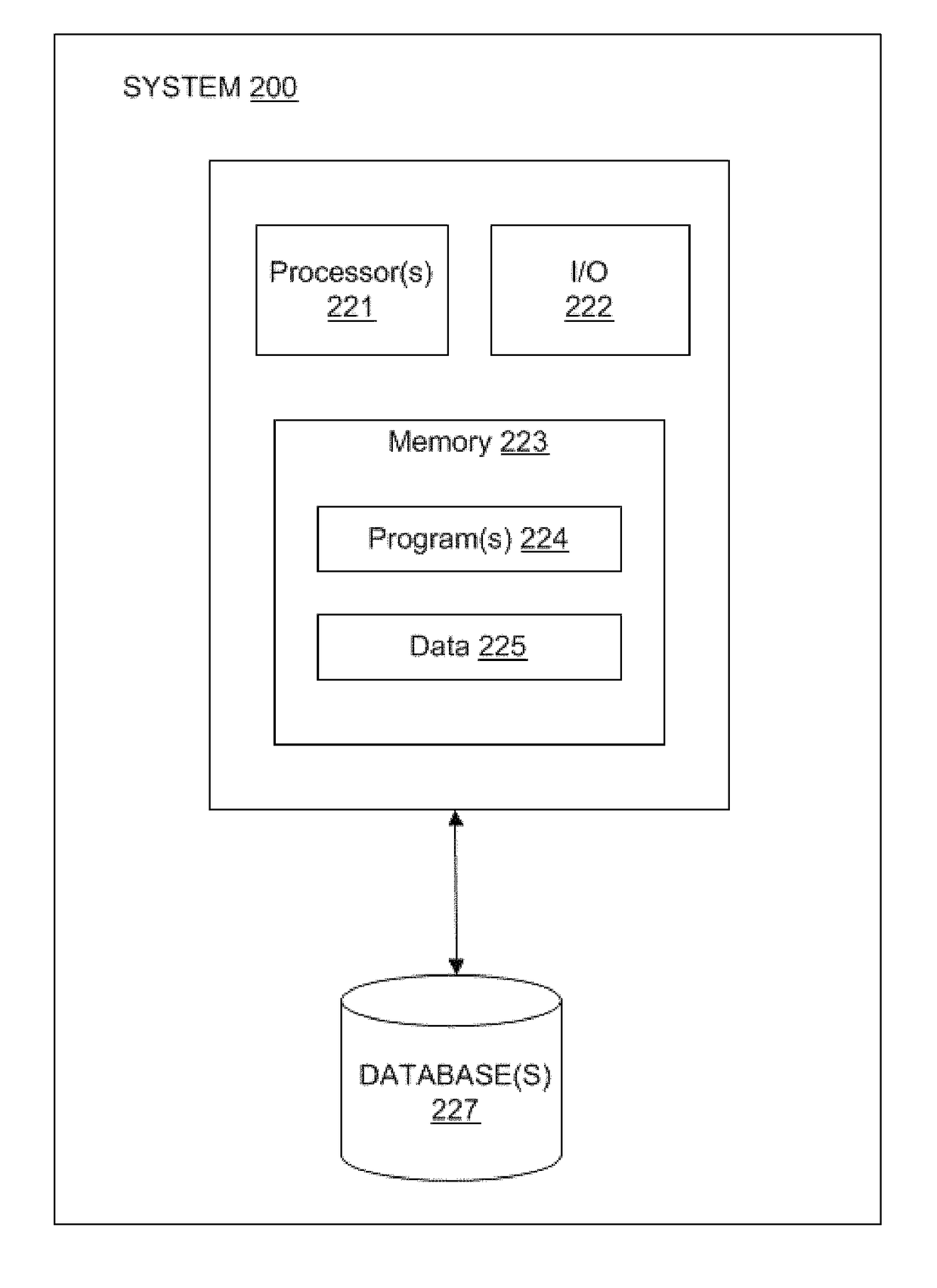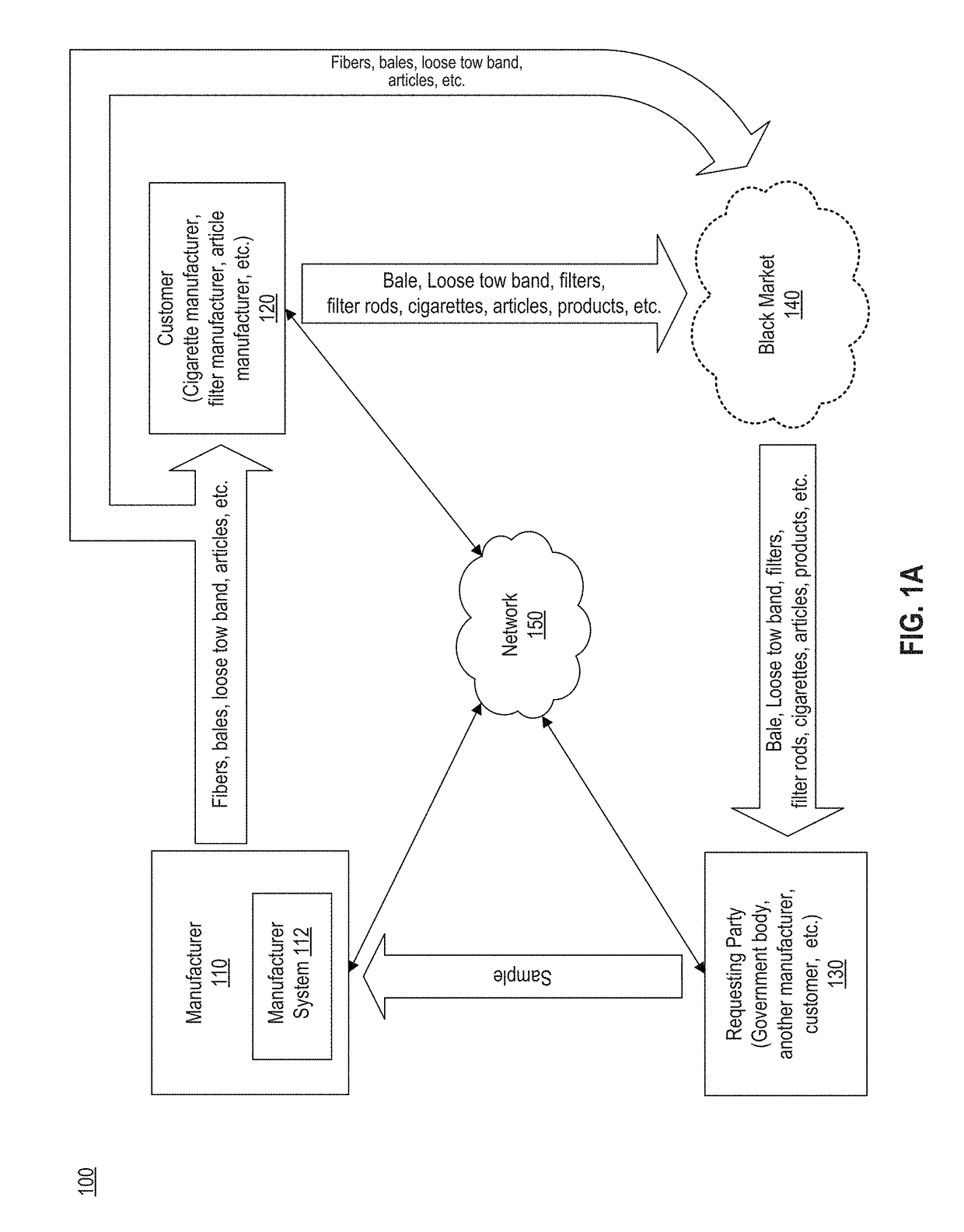Fibers with chemical markers used for coding
a technology of chemical markers and fibers, applied in the field of fibers comprising identification fibers, can solve the problems of more overt solutions that are often susceptible to countermeasures such as destruction, modification, repackaging, or relabeling
- Summary
- Abstract
- Description
- Claims
- Application Information
AI Technical Summary
Benefits of technology
Problems solved by technology
Method used
Image
Examples
example 1
[0208]A 20 mL scintillation vial was charged with cellulose acetate (1.00 g) followed by HPLC grade acetone (11.38 mL) to give a mixture 10% (w / w) in solids. 100 μL of a 1.0 mg / mL stock solution of cesium (I) nitrate (0.68 mg / mL in cesium), prepared in a 9:1 acetone / water solution, and was added to the mixture to give a dope that was 68 ppm in cesium based on total solids. The vial was then placed on a continuous roller for a minimum of 16 hours or until a homogenous dope was formed. The dope was then poured into labeled culture dish bottoms (100 mm×20 mm) set in a transparent container with a cover. The solvent was allowed to slowly evaporate under cover for 5 hrs. The cover was then removed and the samples allowed to dry further under the draft of the fume hood for 1 hr. The samples were then removed from the dishes and submitted for ICP-MS analysis. The calculated spiked concentration of cesium, the measured concentration of cesium and the Recovery calculated as the percent measu...
examples 2-5
[0209]Example 1 was repeated to prepare four additional films, by linearly increasing the concentration by a factor of two in each film. The results are summarized in Table 1.
example 6
[0210]A 20 mL scintillation vial was charged with cellulose acetate (1.00 g) followed by HPLC grade acetone (11.38 mL) to give a mixture 10% (w / w) in solids. 100 μL of a 1.0 mg / mL stock solution of indium(III) chloride tetrahydrate (0.39 mg / mL in indium), prepared in a 9:1 acetone / water solution, and was added to the mixture to give a dope that was 39 ppm in Indium based on total solids. The vial was then placed on a continuous roller for a minimum of 16 hours or until a homogenous dope was formed. The dope was then poured into labeled culture dish bottoms (100 mm×20 mm) set in a transparent container with a cover. The solvent was allowed to slowly evaporate under cover for 5 hrs. The cover was then removed and the samples allowed to further dry under the draft of the fume hood for 1 hr. The samples were then removed from the dishes and submitted for ICP-MS analysis. The calculated spiked concentration of indium, the measured concentration of indium, and the % Recovery calculated as...
PUM
| Property | Measurement | Unit |
|---|---|---|
| effective diameter | aaaaa | aaaaa |
| effective diameter | aaaaa | aaaaa |
| effective diameter | aaaaa | aaaaa |
Abstract
Description
Claims
Application Information
 Login to View More
Login to View More - R&D
- Intellectual Property
- Life Sciences
- Materials
- Tech Scout
- Unparalleled Data Quality
- Higher Quality Content
- 60% Fewer Hallucinations
Browse by: Latest US Patents, China's latest patents, Technical Efficacy Thesaurus, Application Domain, Technology Topic, Popular Technical Reports.
© 2025 PatSnap. All rights reserved.Legal|Privacy policy|Modern Slavery Act Transparency Statement|Sitemap|About US| Contact US: help@patsnap.com



